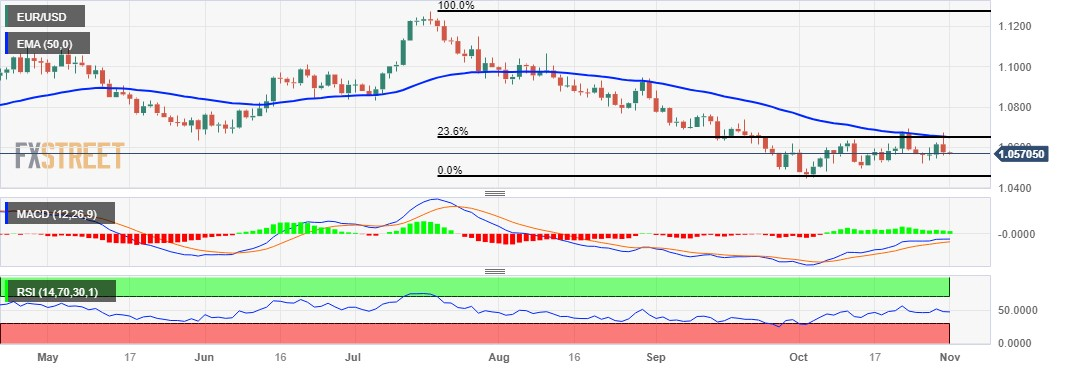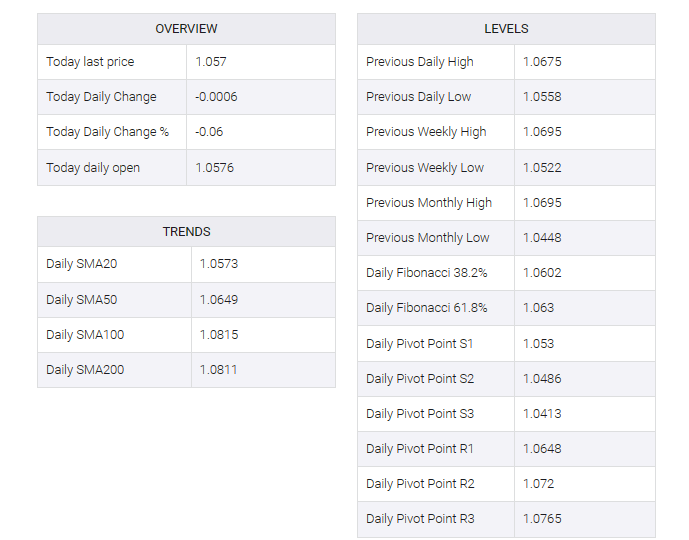-
EUR/USD could revisit the previous week’s low at 1.0521 due to facing pressure.
-
Any dovish remarks post-Fed decision could uplift the pair toward a 23.6% Fibonacci retracement level at 1.0648.
-
RSI indicates a bias towards a weaker market sentiment.
EUR/USD rallied ahead of the Federal Open Market Committee’s (FOMC) policy decision on expectations that the current interest rate will be kept at 5.5% at its November meeting. The pair traded lower around 1.0570 during the Asian session on Wednesday.
The Eurozone Harmonized Index of Consumer Prices (HICP) showed a significant slowdown in a report released on Tuesday, falling to 2.9% from an annual pace of 4.3% in October. This significant drop in consumer prices is consistent with market expectations that the European Central Bank (ECB) is unlikely to raise interest rates further. Additionally, risks of a bearish tilt could weaken the EUR/USD pair.
The EUR/USD pair may find support near the psychological level of 1.0550, followed by the previous week’s low of 1.0521. If the pair credibly breaches the latter, it could pave the way for further downward movement towards critical levels near 1.0500.
Moving Average Convergence Divergence (MACD) line position below the centerline but above the signal line indicates a potential shift in momentum. This short market sentiment suggests a material mix that indicates a possible reversal in the prevailing trend.
Investors will closely monitor the Federal Open Market Committee’s (FOMC) post-meeting communication to gauge the potential path for interest rates. Any dovish comments could turn the pair upside down towards key resistance around the 23.6% Fibonacci retracement level at 1.0648. Further barriers are represented by the 50-day exponential moving average (EMA) at 1.0650.
A successful breach above the mentioned resistance level could strengthen the EUR/USD pair to revisit the October high of 1.0694.
However, the EUR/USD pair seems to be facing restrained momentum as the 14-day Relative Strength Index (RSI) is below the 50 level, suggesting bearish momentum and reflecting a bias towards a weak market sentiment.



